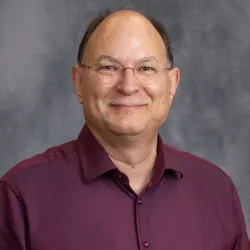Single Molecules Come Into Focus: From Bacterial Riboswitches to Mammalian Cellular Phase Separation
Join us for a seminar presented by Professor Nils G Walters from University of Michigan.
Content navigation
Description
Abstract
At least 75% of the human genome is transcribed into RNA, but the vast majority of these transcripts do not code for proteins but rather for ‘non-coding’ RNAs (ncRNAs), many of which remain uncharacterized in terms of their structure and function [1].
Currently, more than 80,000 unique ncRNAs have been identified in human cells, suggesting that for a long time we have underestimated the intricacies involved in human genome maintenance, processing, and regulation by neglecting this far-reaching ‘RNA World.’ Nature and modern nanotechnology likewise employ nanoscale RNA machines that self-assemble into structures of complex architecture and functionality.
Fluorescence microscopy offers a non-invasive tool to probe, dissect and ultimately control these nanoassemblies in real-time. In particular, single molecule fluorescence resonance energy transfer (smFRET) allows us to measure distances at the 2-8 nm scale, whereas complementary super-resolution localization techniques based on Gaussian fitting of imaged point spread functions (PSFs) measure distances in the 10 nm and longer range [2, 3].
Encapsulating the power of these advances, we have combined single-molecule and biochemical approaches to show that a central, adaptable RNA helix in the widespread manganese-sensing riboswitch functions analogous to a molecular fulcrum to integrate disparate signals for finely balanced bacterial gene expression control [4].
We posit that many more examples of such intimate structural and kinetic coupling between RNA folding and gene expression remain to be discovered, leading to the exquisite regulatory control and kinetic proofreading in all life processes. We have also developed a multi-tether approach for the single molecule tracking of fluorescently labeled proteins and RNAs within biomolecular condensates to study the liquid-liquid phase separation of RNA-protein granules involved in human pathologies [5-7], using the well-studied RNA-binding protein Fused-in-Sarcoma (FUS).
We find that significant fractions of RNA and FUS molecules become locally confined to distinct, slow-moving nanoscale domains that engender elevated local connectivities and changed chemical environments, leading to the aging of condensed liquid-like condensates into gel-like percolation networks. We posit that these nanodomains become seeds for the fibrilization observed in neurodegenerative disorders.
Speaker Biography

Nils G. Walter is currently the Francis S. Collins Collegiate Professor of Chemistry, Biophysics, and Biological Chemistry in the College of Literature, Science and the Arts of the University of Michigan in Ann Arbor, Michigan. He cofounded and currently codirects the Center for RNA Biomedicine at Michigan, developing a thrust in RNA Therapeutics. He started his career by receiving his “Vordiplom” (B.S.) and “Diploma” (Masters) from the Technical University of Darmstadt and earned his Dr. Ing. while studying molecular in vitro evolution of DNA and RNA with Nobel laureate Manfred Eigen at the Max-Planck-Institute for Biophysical Chemistry, Göttingen. For his postdoctoral studies, he turned to RNA enzymes under the guidance of John M. Burke at the University of Vermont in Burlington, Vermont. His research interests focus on gene regulation by noncoding RNAs through the lens of single molecule techniques and applications in drug discovery. Based on this work, he received the Otto-Hahn medal for Outstanding Researchers of the Max-Planck Society (1995), a Feodor-Lynen Postdoctoral Research Fellowship from the Alexander von Humboldt Foundation (1995), a Camille Dreyfus Teacher-Scholar Award (2004), was elected a Member of the American Academy of Arts & Sciences (2011), received the Faculty Recognition (2013) and Harold R. Johnson Diversity Service Awards (2015) from the University of Michigan, and became the first RNA Society Mid-Career Award recipient (2017). He has been privileged to receive long-standing funding from the National Institutes of Health, National Science Foundation, and Foundations, and has previously founded a biotech startup in the molecular diagnostics space.
References
1. N. G. Walter RNA 2015, 21, 756.
2. A. P. Jalihal et al. Cold Spring Harb. Perspect. Biol. 2019, 11, a032441.
3. S. Ray et al. Chem. Rev. 2018, 118, 4120.
4. A. Chauvier and N. G. Walter Cell Chem. Biol. 2024, 31, 71.
5. S. Pitchiaya et al. Mol. Cell 2019, 74, 521.
6. A. P. Jalihal et al. Mol. Cell 2020, 79, 978.
7. G. Gao et al. Nat. Rev. Nephrol. 2023, 19, 756.
Location
Finkel Lecture Theatre, JCSMR
